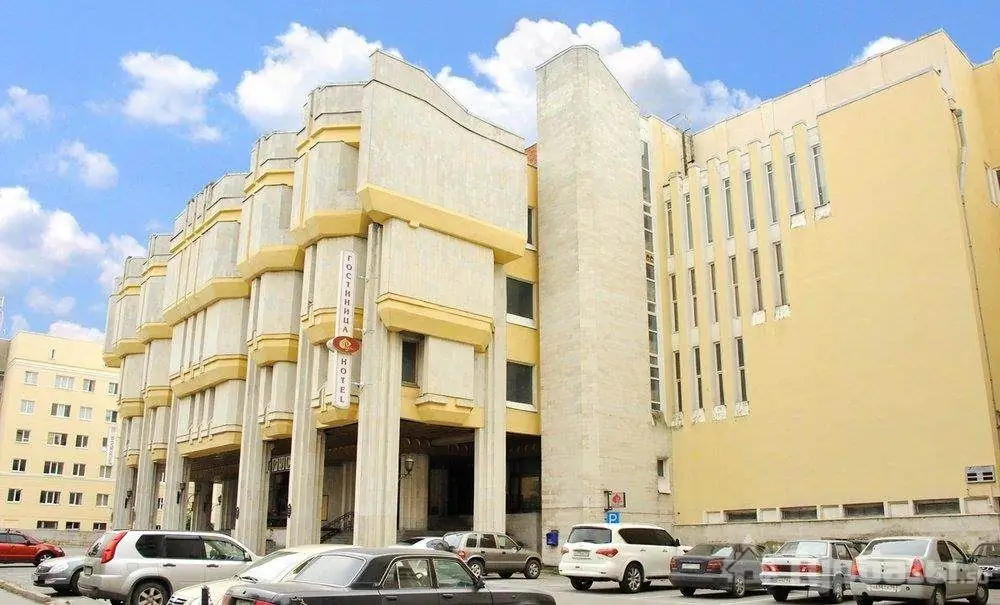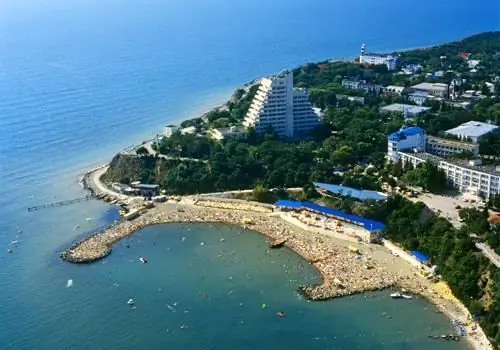- Author Harold Hamphrey [email protected].
- Public 2023-12-17 10:06.
- Last modified 2025-01-24 11:10.
The city of Cherepovets, located on the banks of the northern river Sheksna, is part of the Vologda Oblast. It is not the oldest city in our country, but it is known as a major industrial center, which received city status in the 18th century, during the reign of Empress Catherine II.

Located on the Volga-B altic, one of the most popular shipping routes, the city has become a frequently visited place for tourists. One of the sights worthy of the attention of the guests of the city is the Art Museum of Cherepovets, whose address is Sovetsky Prospekt, 30A.

Museum Description
The museum was separated from the structure of local history in 1938, and in 1957 it was allocated a very modest room on Lenin Street for exhibitions of art collections, where the museum was located until 1992. Today, the Cherepovets Art Museum, the photo of which you can see below, occupies a two-story building on Sovetsky Prospekt.

In two exhibition halls with an area of 1000 square meters there are permanent expositions: "Russian Orthodox art of the XIV-XIX centuries", "Russian art of the XVIII-XX centuries", "Creativity of the peoples of the Vologda region".
Russian and Western European exposition
Many tourists visiting the Cherepovets Art Museum for the first time are surprised how they managed to collect paintings by great Russian masters in a small provincial exposition. Here are the works of the brightest representatives of classicism Rokotov, Petrovsky and Bryullov, the modernist Kustodiev and the realist Repin.
The canvas of Petrovsky - one of the most talented and beloved students of the great Bryullov - "The Appearance of an Angel to the Shepherds" was awarded the gold medal of the Russian Academy of Arts in 1839. The collection of paintings by foreign artists is much smaller. In the Art Museum of Cherepovets, it is represented by the works of Jean Monnier and Johann Lampi.

The exposition is harmoniously complemented by products made of bronze, glass, and porcelain of the late 18th century. The collection of musical mechanical instruments is of great interest to visitors. For example, the polyphon cabinet, which was made in the 19th century at the famous factory of G. Yu. Zimmerman, delights visitors with an unpretentious melody even today.
Orthodox art
The exposition "Orthodox Art of Russia of the XIV-XX centuries" includes unique old icons, handwritten and printed liturgical books, sewing patterns. The treasure and main asset of the museum is the oldest icon of St. Nicholas, which, according to experts, belongs to the XIV century. Few such images have been preserved in our country.
Among the numerous exhibits of the Cherepovets Art Museum, there are icons of the 16th century from the Goritsky Monastery: “The Protection of the Most Holy Theotokos”, “The Icon of the Martyr Mina with Stamps of Miracles”. Some unique icons from the museum's collection represented Russian spiritual culture at exhibitions in Florence and Genoa, in Japan and the Vatican, in Cyprus.

Deserve no less attention and icons of a later time in the collection of the Art Museum of Cherepovets. All of them are written in the special tradition of the North Russian school. Among the samples presented there are nominal ones, which is not at all typical for Russian icon painting, since at all times it was not so important who the author of the image was, it was much more important who was depicted on it. However, in the 16th century, these strictnesses were somewhat softened, thanks to which the Cherepovets Art Museum today is the owner of the icon, which is known for certain to belong to the famous master T. Ivanov, who became famous for painting the Armory in Moscow.
Folk Art
The exposition of folk art of the Art Museum introduces visitors to the clothes and household items of peasants. Distaffs and women's headdresses embroidered with river (including Sheksnin) pearls, sledges, a collection of gold embroidery of the 17th century are exhibited here. The Shroud “The Regulations” deserves special attention.into the tomb of Jesus Christ.”

Collection of books
Primary printed and handwritten books of the 15th-19th centuries represent the book collection of the Cherepovets Art Museum. Almost 400 samples are presented here, including those printed in “citizen” - a font introduced by Peter I.

Exhibition of the book collection of the Kirillo-Novoezersky Monastery
Almost a thousand books and other items from the Kirillo-Novoezerskaya monastery have been carefully kept in the funds of the Cherepovets Museum since 1928. Previously, only the most valuable exhibits were presented. But quite recently, the museum hosted an interesting exhibition.
The library of Archimandrite Feofan, who served as abbot of the monastery until 1829, was of particular interest to visitors. This unique collection amazes even experts with a variety of subjects and the highest scientific level. Here are publications on Chinese philosophy and history, liturgical books and rare travel notes, a children's encyclopedia, textbooks and even a description of Captain Cook's travels. Among the rarities are editions in silver and gold frames, decorated with carvings and relief patterns.

At the exhibition, each showcase is a block reflecting a certain period of printing. Here you can also see the rare deposit book of the monastery. This is a kind of document in which the contributors of the monastery are indicated, including representatives of the boyar and princely families. They replenished the library of the monastery, contributed money and valuables to the church treasury.
In our country, there are very few loose-leaf books. The book presented in the museum began to be compiled at the end of the 17th century and continued until the middle of the 19th century. The first entry in it dates back to 1627, when the nobleman Polev made his contribution to the monastery. This book was used to identify many items from museum collections. Among the first-printed books, the Oktoih, dated 1594, should be singled out.
Gallery
At the museum, there is not yet a very large gallery of contemporary art, which represents the work of both Cherepovets artists and painters from other regions of Russia. It regularly hosts exhibitions of talented students of the local university (artistic and graphic department) and the art school.
Museum Branches
The Museum of Cherepovets has branches that can be visited by anyone interested in Russian wooden architecture. These are open-air museums where you can see the stunning Church of the Assumption, located in the village of Nelazskoe, and the Church of St. Nicholas, located in the village of Dmitrievo. Both of them are skillfully made of wood. These structures were built at the end of the 17th century.
The unique design and construction features and the interior decoration of churches make it possible to appreciate the grandeur and elegance of the masterpieces of Russian church architecture.

Excursions are conducted in the museum of Cherepovets accompanied by an experienced guide. True, prior registration for the tour service is required. Phone of the Art Museum of Cherepovets: (8202) 51-75-25. It can alsofind out on his official website. The administrator will answer all your questions and set the date and time of the tour.
Visitor reviews
Many guests of the city admit that they discovered this museum by chance, being in the city on a business trip or passing through. The exposition made a great impression. Such a collection of unique exhibits is not always found in larger museums. Many visitors express their gratitude to the staff of this institution for their professionalism, attention to guests and dedication.






